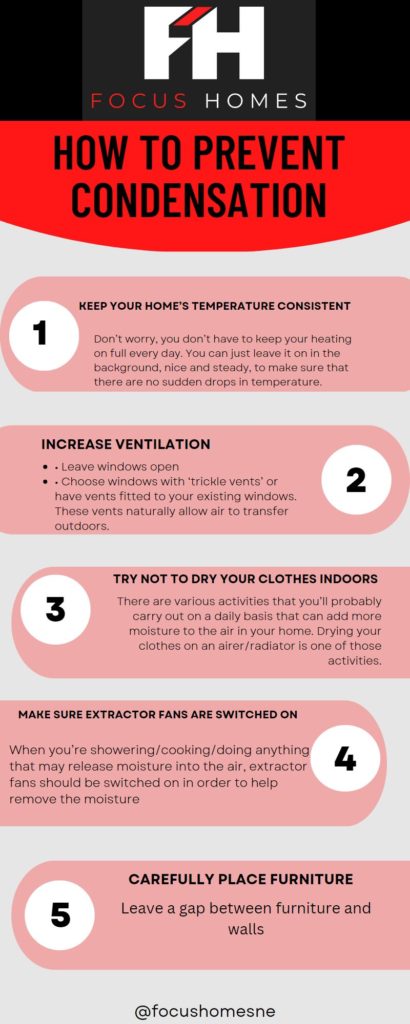How to Prevent Condensation
How to prevent Condensation. Condensation in your home can be a real problem. It can cause dampness, mould, and mildew, leading to health problems for yourself and your family. Fortunately, there are several steps you can take to help reduce condensation in your home and keep it at bay. Let’s look at some of these tips.
What is Condensation?
Condensation in the home is a common problem faced by many residents in the UK. It occurs when moisture is released into the air and settles as liquid droplets on cold surfaces. This happens when warm, humid air meets colder walls or windows, or anywhere that is cooler than the temperature of the environment. The causes of high humidity levels in homes can be anything from cooking and boiling water to poor ventilation or insulation, leading to dampness and mould growth. To prevent condensation indoors, it’s important to open windows regularly and use kitchen and bathroom extraction fans. Additionally, you should make sure your home has adequate insulation that can properly regulate temperature changes. Taking these precautions will help you keep your home dry and increase its air quality for improved health and comfort.

Here’s a list of ways you can prevent condensation in your Home
Ventilate Your Home
The best way to reduce condensation is to ventilate your home correctly. This means opening windows when possible and using extractor fans in kitchens and bathrooms. When cooking or showering, try leaving the door open so that steam can escape more easily. If you don’t have an extractor fan, consider investing in one since this will help draw out moisture-laden air more effectively than just opening a window alone.
Heating Your Home
Keep your home well heated, ideally around 18°C in the living room and a minimum of 16°C in other rooms. This will help reduce the amount of moisture in the air, thus reducing condensation buildup on surfaces such as windows or walls which can lead to mould growth if not addressed quickly enough.
Laundry
Don’t dry your clothes inside as this can create dampness and condensation due to excess moisture being released into the atmosphere – hang them outside on a washing line or use a tumble dryer that ventilates out of a wall instead for best results!
Cover Pans
When cooking, cover pans with lids and keep kitchen doors closed to prevent steam from entering other areas of your home where it may cause condensation and dampness to form.
Carefully Place Furniture
Leave a gap between furniture and walls to prevent dampness and mould build-up by allowing the air to circulate.
Conclusion: How to prevent condensation
Overall, preventing condensation in your home is achievable with just a few simple changes. By following the advice above, such as ventilating, insulating, and keeping your home heated, as well as taking care of laundry and cooking activities, you can help reduce the amount of condensation in your property. With regular maintenance, you should be able to keep any potential problem areas at bay!
Good luck!
